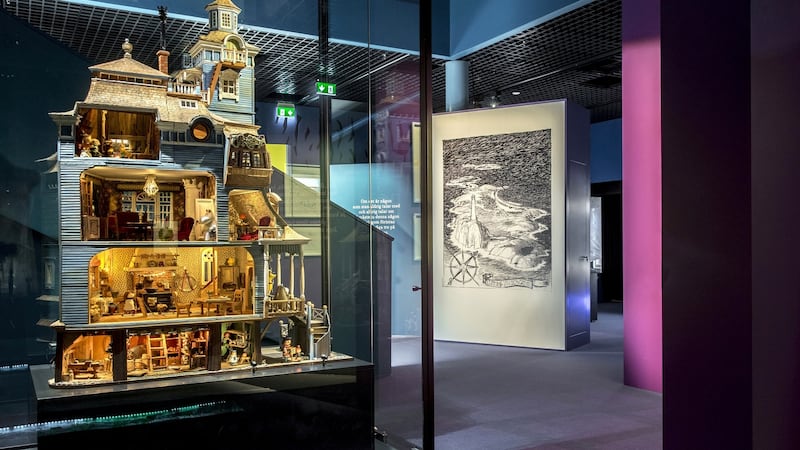On the walls and in glowing display cases of a new museum in Finland, little blob-nosed creatures potter about their daily lives: gardening and cooking, going for walks or playing music; coming out of hibernation to greet the spring sun; and also tidying their houses as the leaves turn and the long Nordic winter nears. Moomins fans from all over the world are already making their way to Tampere in southern Finland to see the original artwork by author Tove Jansson and the fantastically detailed models of scenes from the books made by her life partner and fellow artist, Tuulikki Pietila. On the opening day, last month, 3,000 devotees visited, including a large Japanese contingent.
Jansson, who came from a Swedish-speaking Finnish family of artists and had been earning money as an illustrator from the age of 15, published the first book, The Moomins and The Great Flood, in 1945. A surprisingly dark fantasy about kind-hearted, simple creatures whose world was threatened with annihilation, written in the shadow of the second world war. Many books followed but they only became international bestsellers – and made her famous at home – in the 1950s, when she began a Moomins strip cartoon for the London Evening News.
The location of the museum will strike many visitors as odd. Tampere is the largest inland city of any of the Nordic countries, a post-industrial place being reinvented as a digital startup centre, where the old mills on the river are being recycled as shops and museums. Set between two huge lakes, the most spectacular views come from the excellent Restaurant Näsinneula, which is heavy on foraging and edible flowers, and sits at the revolving top of the 134-metre observation tower.
The city has a vibrant arts and music scene, and a growing number of festivals, including Lost In Music in early October, which gives a platform to underground and metal bands, and the spring Tampere film festival.
However, Tampere is about as far in character and location from the world of the two women artists as you can get in Finland. It is 170km north of their Helsinki home, and even further from the Pellinki archipelago where they built a one-room wooden summer home on an islet not much bigger than a tennis court.

They came to know and like Tampere when Pietila’s brother was working there as an architect, and before Jansson’s death in 2001 they donated their entire Moomin archive, more than 2,000 drawings and watercolours by Jansson, and scores of Pietila’s magical models, to the city. They are now on display, many for the first time, in the only permanent museum in the world dedicated to the Moomins, created within the Tampere Hall arts complex.
Moomins, for now at least, dominate the entire space, including a Moomin-themed restaurant, and a gift shop with the characters applied to every conceivable surface.
The models include a five-storey house standing three metres tall built in the 1970s with their friend Pentti Eistola, which needed a year’s conservation work on the fragile wooden structure and its thousands of contents. The museum installed a fly-through video to display the obsessive detail of the tiny interiors.
Jansson had an ambivalent relationship with the Moomins, which she first drew on the wallpaper of her family's summer holiday home, included in some of her early mural commissions in Helsinki, and dropped into satirical illustrations for the magazine Garm. She handed on the cartoon strip to her brother Lars, who kept it going until 1975, because she felt it was taking over her life.
According to the curators at Tampere, the treasure of the archive came to their city after it was turned down by the main public art gallery in Helsinki, a humiliating experience for Jansson who yearned to be seen as a serious artist.
The full range of her work will be celebrated at south London’s Dulwich Picture Gallery in an exhibition opening in October, but it is the Moomins – beloved by readers worldwide and also studied by academics who see in her deceptively simple creations echoes of her own life and liberal beliefs, and the history of her country, which will celebrate its century of independence this December – that have ensured her immortality.
The Moomin Museum at the Tampere Hall: adults €12, children €6, open every day except Monday. Adventures in Moomin land at London’s Southbank Centre and runs until 20 August. – Guardian Service










